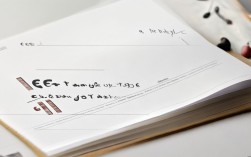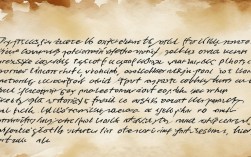小学生介词作文
介词的重要性
介词是英语中不可或缺的一类词,它们像“胶水”一样,将名词、代词与其他词语连接起来,表达时间、地点、方向等关系,对于小学生而言,掌握介词是写作和口语表达的基础,介词虽然短小,但用法灵活,正确使用介词能让句子更生动、准确。“in the park”(在公园里)、“under the table”(在桌子下)等短语,通过介词明确了位置关系。

常见介词分类及用法
介词的种类繁多,但以下几类是小学生最常接触的:
-
表示地点
- in:在……里面(in the box)
- on:在……上面(on the desk)
- under:在……下面(under the chair)
- near:在……附近(near the school)
-
表示时间
- at:在具体时间(at 7 o’clock)
- on:在具体日期(on Monday)
- in:在月份或季节(in July, in summer)
-
表示方向
- to:到……(go to school)
- from:从……(come from China)
- into:进入……(walk into the room)
介词在作文中的应用
在小学生作文中,介词可以帮助描述场景、动作和事件。
- 描述地点:
“I play in the playground every day.”
“The cat is sleeping under the bed.” - 描述时间:
“We have breakfast at 7:30 AM.”
“My birthday is in May.” - 描述动作:
“She runs to the bus stop.”
“He puts the book on the shelf.”
通过正确使用介词,作文的细节会更加丰富,读者也能更清晰地理解内容。
介词练习与技巧
为了帮助小学生更好地掌握介词,可以通过以下方法练习:
-
填空练习
- The ball is __ the table.(答案:under)
- We eat lunch __ noon.(答案:at)
-
看图写句子
给出一幅图片,让学生用介词描述图片内容。
“The dog is __ the tree.”(答案:near) -
介词歌谣
编写简单的歌谣,帮助记忆介词用法:
“In the box, on the chair,
Under the desk, everywhere!”
常见介词错误及纠正
小学生在使用介词时容易犯以下错误:
| 错误用法 | 正确用法 | 原因 |
|---|---|---|
| I go at school. | I go to school. | “去某地”用“to” |
| She is in 8:00. | She is at 8:00. | 具体时间用“at” |
| The book is on the floor. | The book is under the floor. | 根据实际位置选择介词 |
通过对比和练习,小学生可以逐渐避免这些错误。
介词作文示例
以下是一篇以“我的学校”为主题的小学生作文,其中包含多个介词:
我的学校
My school is big and beautiful. There is a playground in the front of the building. We play basketball on it every afternoon. Under the playground, there is a small garden. Some flowers are growing near the fence.
Our classroom is on the second floor. There are many books in the library. I often read books after school. From my window, I can see the trees behind the school.
I love my school. It is a great place for learning and playing.
相关问答FAQs
Q1: 小学生如何快速记忆介词的用法?
A1: 可以通过以下方法快速记忆介词用法:
- 图片联想:将介词与具体图片结合,in the box”对应盒子内部的图片。
- 情景造句:用介词描述身边的事物,我的铅笔在桌子上(My pencil is on the desk)”。
- 儿歌和口诀:通过押韵的儿歌或口诀记忆,In, on, under, near,位置介词要记牢!”
Q2: 介词“in”和“on”有什么区别?
A2: “in”和“on”都表示位置,但用法不同:
- in:用于封闭或有限的空间内部,in the room”(在房间里)、“in the box”(在盒子里)。
- on:用于表面或接触点,on the table”(在桌子上)、“on the wall”(在墙上)。
“in”强调“里面”,“on”强调“上面”。











